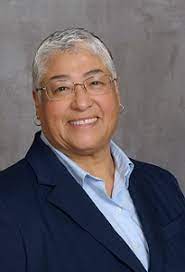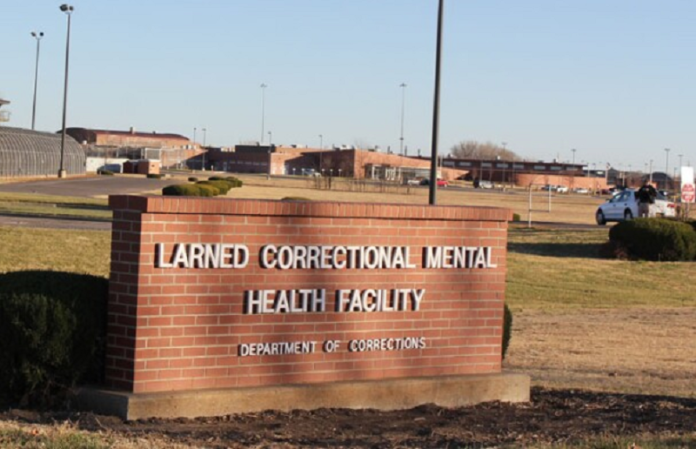(Updated to clarify that ban on Larned nursing contracts was vetoed and not overridden)
A special legislative panel on Tuesday started wrestling with the soaring costs of contract labor at state hospitals, which is now exceeding $60 million a year.
The special joint Committee on Health and Social Services started digging into a problem that has been straining the state budget in recent years.
The state spent about $46 million in contract labor at Larned State Hospital for fiscal year 2025, which ended June 30. It’s up from about $6 million in 2019.
Meanwhile, the state spent about $15.4 million at Osawatomie State Hospital for fiscal year 2025, up from about $133,000 six years ago.
“I don’t know that there are any easy answers. If there were, it probably already would have been solved,” said Republican state Rep. Will Carpenter of El Dorado, chair of the special committee.
“As far as I’m concerned everything is on the table,” Carpenter said.

“There are no bad solutions. There are no bad ideas,” he said. “I want to hear from all of you about what we think we can do to solve this issue.”
The issue became so pronounced during the last legislative session that lawmakers prohibited Larned State Hospital from using contract nursing starting in mid-2026. The governor ultimately vetoed the measure and it wasn’t overridden.
State officials have attributed rising labor costs in the past to the pandemic, which caused demand for contract nurses to mushroom in Kansas and across the country.
They say the issue facing the state is not unique, although its options for addressing the matter are more limited than in the private sector.
The state turns to contract employees so it can maintain the bed capacity at state hospitals and continue serving the same number of patients.
Since fiscal year 2022, the state has added about $61 million more to the budget for contract labor costs at Larned State Hospital, which has about 450 beds, including about 240 for treating convicted sexual predators.
Since fiscal 2024, the state has pumped about $13 million more into the budget for contract labor costs at Osawatomie State Hospital.
Nevertheless, the state is still beset by high turnover and vacancy rates.
The turnover rate for Larned was nearly 10% as of Aug. 13 and about 15% for Osawatomie.
Meanwhile, the vacancy rate at Larned was almost 34% and at Osawatomie it was almost 36%.
Officials at the Kansas Department for Aging and Disability Services say it’s difficult to fill open state nursing slots at the hospitals.
The jobs can be difficult given the type of patients who are treated at the state hospitals.
Officials say the hiring is extremely difficult in western Kansas.
Unemployment rates are very low in Larned and surrounding areas, and wages are unable to compete with the contract nursing rates, they said in the past.
Contract employees can cost significantly more than state workers.
For example, registered nurses are paid $59.37 an hour, including benefits, compared to the $90 an hour the state pays an agency for contract registered nurses.
A licensed practical nurse is $ 43.92 an hour compared to the $70 an hour the state pays an agency for those kinds of nurses.
The amount the state pays an agency for a contract nurse doesn’t reflect the actual salary the contract workers takes home. It’s generally more than what the contract worker is paid.
Lawmakers pressed the state hospital staff to give them a better comparison between the actual take-home pay for state employee and contract staff.
Scott Brunner, deputy secretary of hospitals and facilities at the Kansas Department for Aging and Disability Services, suggested several possibilities to address the issue.
He suggested the Legislature pass a bill considered last session that would increase the statutory limit on state employee bonuses from $3,500 to $10,000.
The House passed the bill last year, but it stalled in the Senate.
He urged lawmakers to continue providing cost-of-living and market adjustments for state hospital staff to maintain competitive wages with other health care facilities.
He also said lawmakers create a nursing education incentive program that would offer scholarships or subsidies to attract individuals to the nursing profession while ensuring a steady flow of professionalsto state healthcare facilities.
He suggested a tuition reimbursement or scholarship program in which participating students would sign a contract agreeing to work for a predetermined period in a
state facility after completing their nursing program.
“We certainly don’t think contract labor is a solution,” Brunner told lawmakers.
“It’s a way of addressing the need to keep beds open and keep patients moving through the system,” he said.
“I think we just have to talk about what that right level of funding is, maybe target it the right way,” he said.
Last session, lawmakers barred Larned from using contract nursing starting July 1, 2026, which is the beginning of fiscal 2027.
But the governor vetoed the proposed and the Legislature decided against an override vote.
The governor said the provision would have led to a diminished ability to care for patients.
She said the state would be better off investing in training and recruiting the health care work force in order to relieve the reliance on contract nursing.
Brunner cautioned against that stopping the use of any contract funding.
“We don’t think that’s a sustainable path,” he said. ”

Republican state Rep. David Buehler of Lansing questioned whether the state has the ability to cultivate a big enough work force to solve the labor issues at the state hospitals.
He noted that there was data showing that state high school enrollment was peaking this year and it wouldn’t be higher again this century.
“If the population is declining and it will never be any higher than it is today, do we actually have a realistic chance of growing our own to fix the staffing problem or should we be looking at this in a different way,” Buehler asked.
“Can we actually grow our own to create staffing that we need,” he asked. “If the answer to that question is ‘no,’…what do we do?”
Brunner agreed that demographics of the areas near the hospitals with nearby communities suffering from population declines poses a staffing problem for the future.
It was a similar view shared by Democratic state Rep. Susan Ruiz of Shawnee.
“We’ve got communities in our rural areas that are almost dying. The population. is decreasing in those areas. That’s another layer to look at,” Ruiz said.
“We’re losing population in these communities so do we continue to try to hire workers.”

Ashley Byram, the superintendent at Osawatomie State Hospital, broke down the contract staffing at that facility for lawmakers.
The hospital has 32 registered nurses, including 16 who are contract staff.
It has 16 licensed practical nurses, including 13 who contract employees. And it has 72 mental health technicians, including 32 who are contract employees.
Byram said that the hospital has worked to cut contract nursing expenses.
During fiscal year, 2024, the hospital’s weekly average for contract nursing was $355,000.
After implementing hiring bonuses in July 2024, the average weekly amount paid for contract staffing fell to $282,000.
From January 2025 through May 2025, the amount of agency contract staffing was about $250,000, she said.
However, because of increasing staffing demands and a change in the staffing model, the average cost per week for contract staff rose to $270,000 a week, she said.
Byram addressed what it would take for the hospital to lure contract nurses to become state employee. The answer, she said, was pay.
She said contract agency nurses said they would need to earn $50 an hour to consider transitioning over to state employment.
She said contract medical health technicians have indicated they would need to make between $25 and $28 an hour to consider joining the state staff.
She said contract workers said hiring bonuses and housing assistance are not viewed as meaningful incentives to becoming a state employee.
“The current wage gap between agency and state positions is our primary obstacle that we have, especially for those high-need shifts,” she said.
She cautioned that eliminating contract staffing for nursing at Osawatomie State Hospital would mean the closure of 116 beds so it can run 24 hour a day, seven days a week plus weekends and holidays. It would be left with 43 beds.
On Monday, she said there was a waiting list of 40 people waiting to get into Osawatomie sitting in jails, hospitals among other places.
“So, if we eliminate those beds imagine what that list will look like,” she said.
Carpenter asked Byram what she would do if she had a magic wand to solve the problem, she responded bluntly: “I would increase the salaries so we could have those nurses coming on board.”
She added that maybe the state could be more flexible by increasing vacation and sick time benefits
“If you look at our current work population, a lot of them are more interested in flexibility,” she said.
“Those are things that the current workforce (is) wanting, some times more than the financial piece.”
Lindsey Topps, the superintendent at Larned State Hospital, said the hospital continues to pursue students for internships and post-doctorate opportunities in its efforts to reduce contract staffing.
She said the hospital also collaborates with colleges and universities across Kansas to bring
interested clinical students for visits and shadowing experience to give them some exposure to the facility.
Topps said the hospital just had three post-doctoral student finish their work but are moving to other states to get additional training.
The students, she said, didn’t believe the local community offered enough amenities for them to want to stay and work at the hospital.
“We had a lot of positive feedback about their experience with us, but apparently, Larned the community, we just don’t have enough social or eating out or shopping kind of opportunities for them,” she said.
“I think that’s something that we have to keep in mind, too,” she said.
“As we continue to try to recruit through some of those avenues is unfortunately the rural aspect of our communities is not always appealing to some of the individuals we bring in,” she said.
“I keep telling people if we have a Chick-fil-A and T.J. Maxx, it might make a difference,” she said. “It might be the golden answer.”















